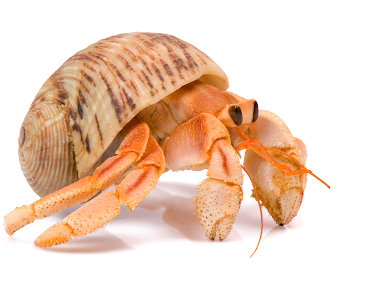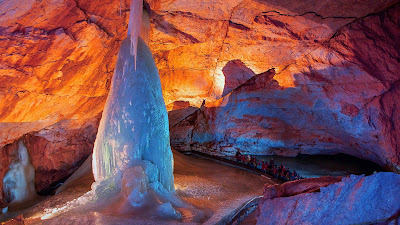An excellent example of the ammonite,
Hoplites bennettiana (Sowby, 1826) with a pathology. This beauty is from Albian deposits near Carrière de Courcelles, Villemoyenne, laid down in the Cretaceous near la région de Troyes (Aube) Champagne in northeastern France.
L'Albien or Albian is both an age of the geologic timescale and a stage in the stratigraphic column. It was named after Alba, the Latin name for the River Aube, a tributary of the Seine that flows through the Champagne-Ardenne region of northwestern France.
The Albian is the youngest or uppermost subdivision of the Lower Cretaceous, approximately 113.0 ± 1.0 Ma to 100.5 ± 0.9 Ma (million years ago).
At the time that this fellow was swimming in our oceans, ankylosaurs were strolling about Mongolia and stomping through the foliage in Utah, Kansas and Texas. Bony fish were swimming over what would become the strata making up Canada, the Czech Republic and Australia. Cartilaginous fish were prowling the western interior seaway of North America and a strange extinct herbivorous mammal, Eobaatar, was snuffling through Mongolia, Spain and England. Interesting times.
 |
| Hoplites maritimus / Hoplites rudis |
Hoplites are amongst my favourite ammonites. I still have a difficult time telling them apart. To the right, you can see a slightly greyish,
Hoplites maritimus, from Sussex England. Below him is a brownish
Hoplites rudis from outcrops between Courcelles and Troyes, France. There are many Hoplites species. Each has a nicely raised tire-track ribbing. My preference is for
Hoplities bennetianus (or
bennettiana). I'm still sorting out the naming of that species. The difference between
Hoplites bennettiana and
Hoplites dentatus is seen on the venter.
Hoplites shells have compressed, rectangular and trapezoidal whorl sections. They have pronounced umbilical bullae from which their prominent ribs branch out. The ends of the ribs can be both alternate or opposite. Some species have zigzagging ribs and these usually end thickened or raised into ventrolateral tubercules.
Ammonites were predatory, squid-like creatures that lived inside coil-shaped shells. Like other cephalopods, ammonites had sharp, beaklike jaws inside a ring of tentacles that extended from their shells to snare prey such as small fish and crustaceans. Some ammonites grew more than three feet (one meter) across — possible snack food for the giant mosasaur Tylosaurus.
Ammonites constantly built new shell as they grew, but only lived in the outer chamber. They scooted through the warm, shallow seas by squirting jets of water from their bodies. A thin, tubelike structure called a siphuncle reached into the interior chambers to pump and siphon air and helped them move through the water.
Ammonites first appeared about 240 million years ago, though they descended from straight-shelled cephalopods called bacrites that date back to the Devonian, about 415 million years ago. They were prolific breeders, lived in schools, and are among the most abundant fossils found today. They went extinct with the dinosaurs 65 million years ago. Scientists use the various shapes and sizes of ammonite shells that appeared and disappeared through the ages to date other fossils.
 |
| Hoplites sp. from the Early Cretaceous of Dorset, UK |
During their evolution, three catastrophic events occurred. The first during the Permian period (250million years ago), only 10% survived. They went on to flourish throughout the Triassic period, but at the end of this period (206 million years ago), all but one species died. Then they began to thrive from the Jurassic period until the end of the Cretaceous period when all species of ammonites became extinct.
Ammonites began life very tiny, less than 1mm in diameter, and were vulnerable to attack from predators. They fed on plankton and quickly assumed a strong protective outer shell. They also grew quickly with the females growing up to 400% larger than the males; because they needed the larger shell for egg production. Most ammonites only lived for two years. Some lived longer becoming very large. The largest ever found was in Germany (6.5 feet in diameter).
Ammonites lived in shallow waters of 100 meters or less. They moved through the water by jet propulsion expelling water through a funnel-like opening to propel themselves in the opposite direction. They were predators (cephalopods) feeding on most living marine life including mollusks, fish even other cephalopods. Ammonites would silently stalk their prey then quickly extend their tentacles to grab it. When caught the prey would be devoured by the Ammonites' jaws located at the base of the tentacles between the eyes.
 |
| Hoplites dentalus, from Albian deposits near Troyes, France |
Most ammonites have coiled shells. The chambered part of the shell is called a phragmocone. It contains a series of progressively layered chambers called camerae, which were divided by thin walls called septae. The last chamber is the body chamber.
As the ammonite grew, it added new and larger chambers to the opened end of the shell. A thin living tube called a siphuncle passed through the septa, extending from the body to the empty shell chambers.
This allowed the ammonite to empty water out of the shell chambers by hyperosmotic active transport process. This process controlled the buoyancy of the ammonite's shell.
First Photo:
Hoplites Bennettiana from near Troyes, France. Collection de Christophe Marot
Second Photo: Top:
Hoplites maritimus from Sussex, UK. Bottom:
Hoplites rudis from near Troyes, France. Collection of Mark O'Dell
Third Photo:
Hoplites sp. from the Early Cretaceous of Dorset, UK. Natural Selection Fossils
Fourth Photo:
Hoplites dentalus from Albian deposits near Troyes, France. Collection of Stéphane Rolland.
Wright, C. W. (1996). Treatise on Invertebrate Paleontology, Part L, Mollusca 4: Cretaceous Ammonoidea (with contributions by JH Calloman (sic) and MK Howarth). Geological Survey of America and University of Kansas, Boulder, Colorado, and Lawrence, Kansas, 362.
Amédro, F., Matrion, B., Magniez-Jannin, F., & Touch, R. (2014). La limite Albien inférieur-Albien moyen dans l’Albien type de l’Aube (France): ammonites, foraminifères, séquences. Revue de Paléobiologie, 33(1), 159-279.








































